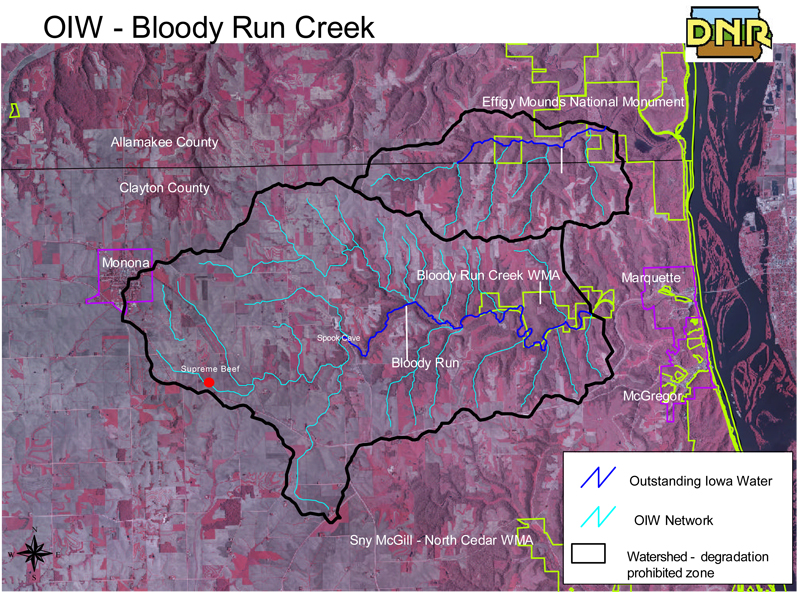Outstanding Iowa Waters (OIW)
The 1972 Federal Clean Water Act (CWA) required states to enact water quality standards (WQS) that achieved the “fishable – swimmable – drinkable” goals of the act regardless of whether pollution was from “point-sources” like municipal and industrial wastewater treatment plants, or from “non-point” sources such as storm water or runoff from agricultural operations. Concentrated animal feeding operations (CAFO’s) were defined as potential point-sources because of the large volume of waste stored in one location and generally spread on specific locations over short time periods.
The Act also required state WQS to protect existing levels of water quality that were above the fishable-swimmable minimums. This is known as “anti-degradation”. Until 2006, Iowa WQS did not include acceptable anti-degradation policies. This changed as a result of a lawsuit filed against EPA by the Sierra Club and others for allowing Iowa standards that were deficient. One result of the lawsuit was the creation of a category of waters known in CWA terms as Tier 2.5 waters, but also referred to as simply “Outstanding Iowa Waters” (OIW) – deserving of special protection. There are precisely 35 waters including 32 stream segments and 3 lakes, in this category. Bloody Run Creek is one of them.
The designated portion of Bloody Run Creek is approximately 6.5 miles long, extending from the Hwy 18 crossing near Marquette, through the Bloody Run Creek Wildlife Management Area (WMA) up to and including the world-famous Spook Cave tourist attraction. Note that the Supreme Beef site, and much of the manure spreading, is within the “no degradation zone” identified by DNR.
